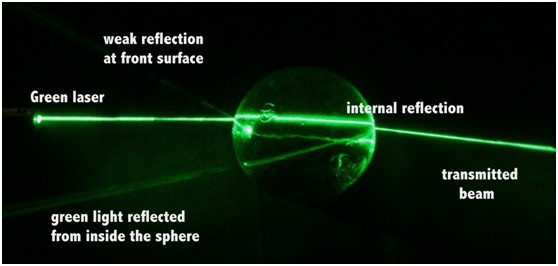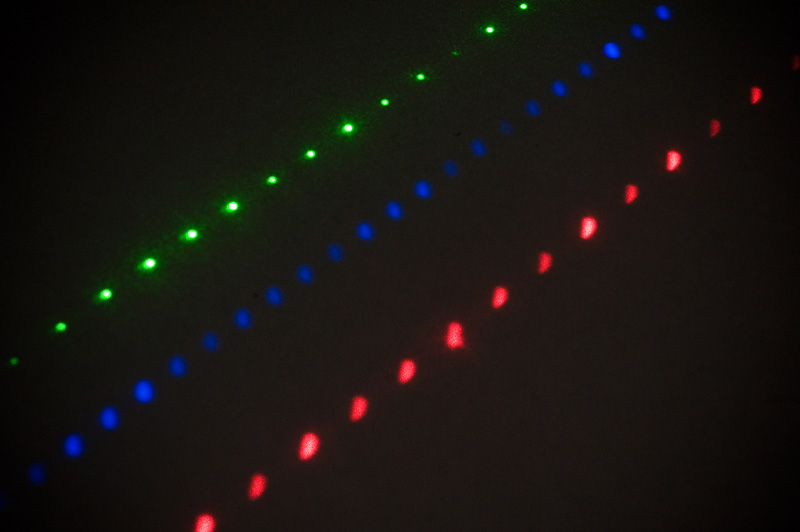Help Page and Knowledge Base
1. What is a laser?
2. What are lasers used for?
3. What does mW stand for?
4. What does wavelength mean?
5. What does laser radiation mean?
6. What kind of hazards can be caused by laser? How serious it will be?
7. What is output power?
8. Why do green laser pointers are more visible than red laser pointer?
9. Why green laser pointers are used as an astronomy laser?
10. Why people use low powered red laser pointer as a pet toy?
11. How to protect eyes from laser hazards?
1. What is a laser?
“Laser” stands for “Light Amplification by Stimulated Emission of Radiation”.
Laser emits light coherently which allows a narrow spectrum laser beam and a focused light spot on a targeted surface.
2. What are lasers used for?
Lasers are greatly applicable in usual presentation work in astronomy research, star pointing, pet toys and laser display entertainment, industrial laser alignment system, laser surgery and laser therapy in physical treatment of muscle pain and relaxing, laser hair removal. Lasers are also widely applied in many important scientific researches.
Lasers are commonly used in consumer devices such as CD and DVD players, laser printers, bar code scanners, laser alignment, and laser pointers etc.
3. What does "mW" stand for?
“mW” stands for mill watt. It is the output power of a laser. “mW” means one thousand of a watt.
The output power will determine how powerful the laser will be.
A low powered laser pointer among 1mW-50mW is basically used for presentation; A middle powered handheld laser is applicable for military targeting, burning and thermal experiments; A high powered laser is mostly applicable in medical care, military, industry and surveillance etc.
4. What does wavelength mean?
Wavelength is always described in nanometer, and determines the color of the laser. Our eyes are sensitive to light with very small region of the electromagnetic spectrum named as “visible light”.
The usual available wavelengths are divided into three parts:
● Ultraviolet light: 100-400nm, 244 nm, 257 nm, 325 nm, 364 nm
● Visible light: 400-750nm, 405nm, 450nm, 460nm, 473 nm, 488 nm, 514 nm, 589nm, 515nm, 520nm, 532 nm, 633 nm, 650nm, 660 nm
● Infrared Light: 750nm-1mm, 785 nm, 808nm, 830 nm, 980 nm, 1064 nm
Human eyes are capable to see radiation from visible light (400-750nm). The visible laser color from shortest to longest wavelengths are violet, blue, green, yellow and red. Ultraviolet wavelength is shorter than visible light, emits invisible light to human eyes. Infrared radiation has longer wavelength than visible red light, project invisible light to human eyes.
5. What does laser radiation mean?

Laser radiation refers to a laser device that produces and amplifies light. There are different kinds of laser radiations. Some laser radiations are in the form of visible light, other emits radiation that is invisible to human eyes, such as UV or infrared radiation.
6. What kind of hazards can be caused by laser? How serious it will be?
Improper operations of lasers are extremely dangerous. The intense laser radiation such as exposure can cause serious injury to skins and eyes permanently. There are even potential hazards from invisible laser radiation until it is too late.
Laser light hazards to eyes
High optical intensity can cause damage to eyes even in very long distance. Laser radiation can be focused by eyes’ lens to a tiny spot on the retina, which can cause temporary damage within a second to retina even when the laser device is only in level of a few milliwatt power.
Temporary exposure to high intensity laser radiation can result in both thermal and photochemical effects. Laser radiation can burn peripheral regions of the retina, which can cause blind spots on eyes without being noticed.
Skin Injury
High power infrared lasers can cause skin burns if skins are espoused to infrared light. Exposure to infrared spectrum lasers my result in erythema, skin cancer, skin aging, dry skin effects, and photosensitive reaction in the skins. Mid-infrared lasers, particularly those operated at fixed wavelength with strong absorption in the cornea can also cause painful corneal injuries.
Ultraviolet lasers hazards
Ultraviolet lasers can cause corneal flash burns, a painful condition of the cornea. Ultraviolet (UV) can cause photokeratitis and cataracts in the lens of eyes. They can lead to changes in pigmentation, erythema (sunburn), and (most important) skin cancer.
7. What is output power?
The output power is related to the produced power of the laser beam, which is usually stated in milliwatt (mW). The milliwatt is a unit of power, which is one one-thousand of a watt. Higher power lasers are always more powerful than lower power lasers
8. Why do green laser pointers are more visible than red laser pointer?
Even at a very low output power, green laser pointer is significantly more visible than red laser pointer. That’s because common green laser emits a monochromatic beam at 532n, a wavelength that is very close to 550nm. Green laser is regarded as the most sensitive laser to human eyes, thus green laser is more visible than red laser pointer.

9. Why green laser pointers are used as an astronomy laser?
Thant has been a long history when people use flashlight for astronomy, and green laser pointer is a new variation of an old idea for many years.
Human eyes are most sensitive to green light. Usually the same measured output power of a red laser would not be as visible as green laser, since human eyes are not as sensitive to red light. Astronomy researcher and amateurs would choose green laser pointer as the only and the best choice for celestial observation tool.
10. Why people use low powered red laser pointer as a pet toy?
Most pet owners would choose laser as a toy, but low powered red laser pointer lower than 5mW is your correct choice. Red laser pointer emits a moderate visible red beam, which is not harmful to pet’s eyes, even in case of direct contact. Laser should not be the only one toy for pet.
11. How to protect eyes from laser hazards?
Laser radiation and reflection can cause vision damage. Damage is usually severe, and may result in blindness. Below are tips of protecting your eyes from lasers:
● Never let the laser beam and spot shine into your eyes. Avoid looking directly into the laser emitting hole. Never stare at laser beam while it is working.
● Pay attention while your laser pointer is pointed to smooth surface, such as water, mirror or metals. The laser reflective beam intensity may equal its beam intensity.
● Wear laser safety goggles to protect all kinds of laser radiations.
